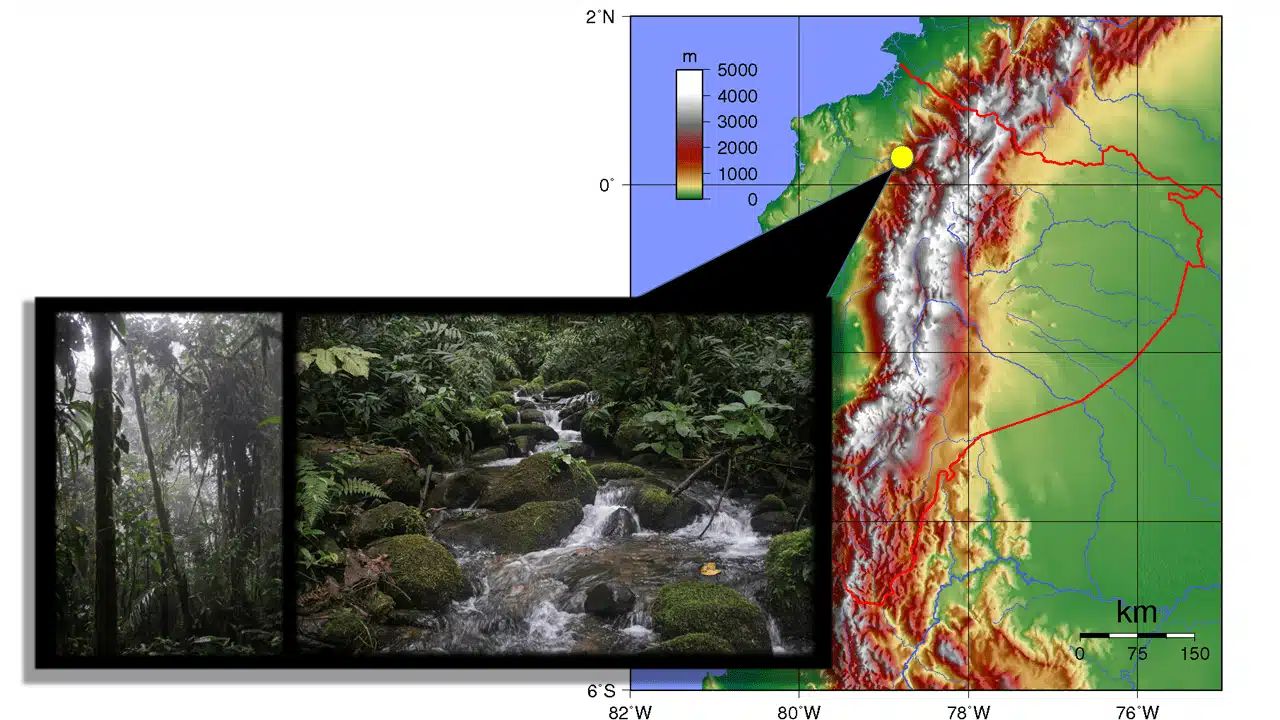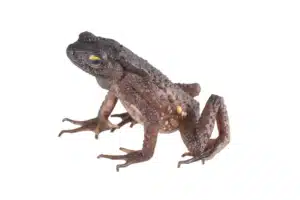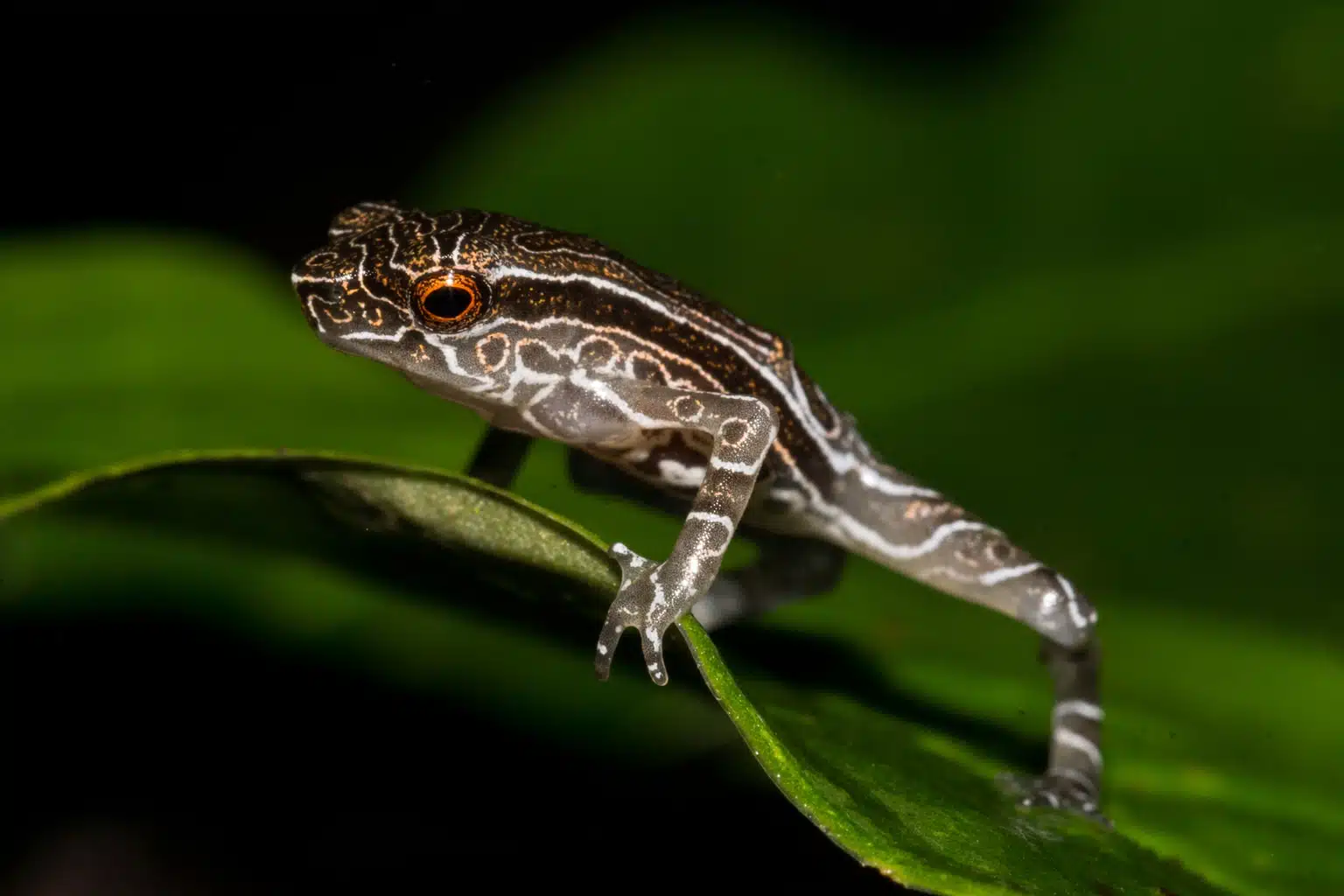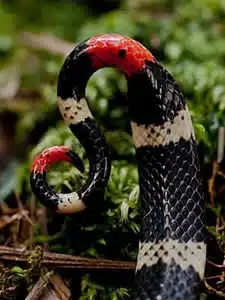Río Manduriacu Reserve
THE LAST HOPE
The Río Manduriacu Reserve is our newest study site, and it has taken us completely by storm. Situated on the western slopes of the Andes Mountains, Manduriacu is lush with mature cloud forest habitat and a network of clear, pristine streams. Also impressive is its range of elevation, with the lowest point beginning at the Río Manduriacu (1,100 m) and the highest at the ridge-line of the canyon its positioned within (1,900 m). Adding to the remote nature of Manduriacu, it’s bordered to the east and west by Bosque Protector land (similar to National Forests in the U.S.), and a large national park to the north.

The conservation importance of this site was immediately evident with the “rediscovery” of the once considered extinct Tandayapa Andes Toad, Rhaebo olallai, which now stands as the only known population of the species. Nonetheless, the results after three expeditions to Manduriacu even further substantiate the need to protect this area. In addition to learning new information about this majestic toad, we have rediscovered the most beautiful glassfrog in the world, discovered a new glassfrog and named it after the local community, rediscovered Fugler’s shadow snake (PDF) after not being seen for 54 years, and discovered an adorable new species of terrestrial frog. We have also recorded nearly 100 species of amphibians and reptiles from this single canyon! Alarmingly, nearly a third of these species are already considered threatened with extinction by the IUCN Red List of Threatened Species. That is, the Tandayapa Andes Toad is one of many threatened species using this small refuge of habitat as a stronghold. Moreover, our data indicates that this story is far from complete, as we have yet to account for the full assemblage of amphibians and reptiles at Manduriacu.
Unfortunately, time is not a luxury–a mining company already has Manduriacu on their radar, as they have made their exploratory presence known this year. We are working as fast as possible to organize additional expeditions to gather more data, and most importantly, outline necessary measures to take to ensure the protection of this unique site. Sadly, the fate of the Tandayapa Andes Toad is at stake!

Such endeavors take time and resources, and your help will go a long way! All donations to TBG are currently being dedicated to our efforts at Manduriacu, as well as helping to secure long-term salary for local park guards, additional land acquisition, and potentially an in-country lawyer to help our partners navigate this sensitive and pressing issue.

Ecuadorian Biodiversity Project
Project Home
Biodiversity in Ecuador
Species Discovery in Ecuador
Ecuadorian Study Sites

For its size, Ecuador is the most biodiverse country on earth. It holds about 8% of all the species of amphibians on Earth and 16% of bird species–all in a country about the size of Arizona!
Many tropical ecosystems are under dire peril–our study regions in western Ecuador are over 95% deforested.
You can help with this important work